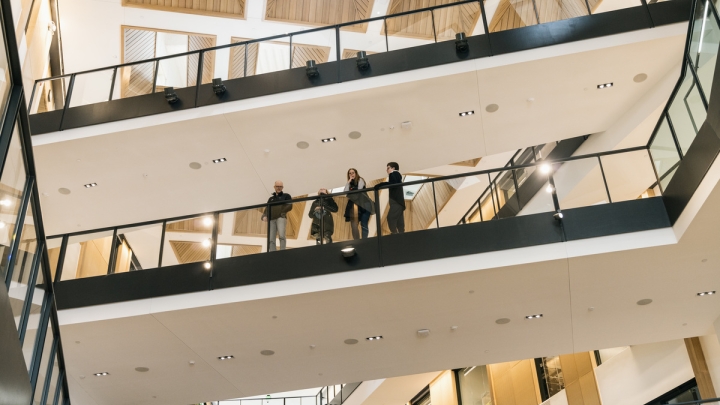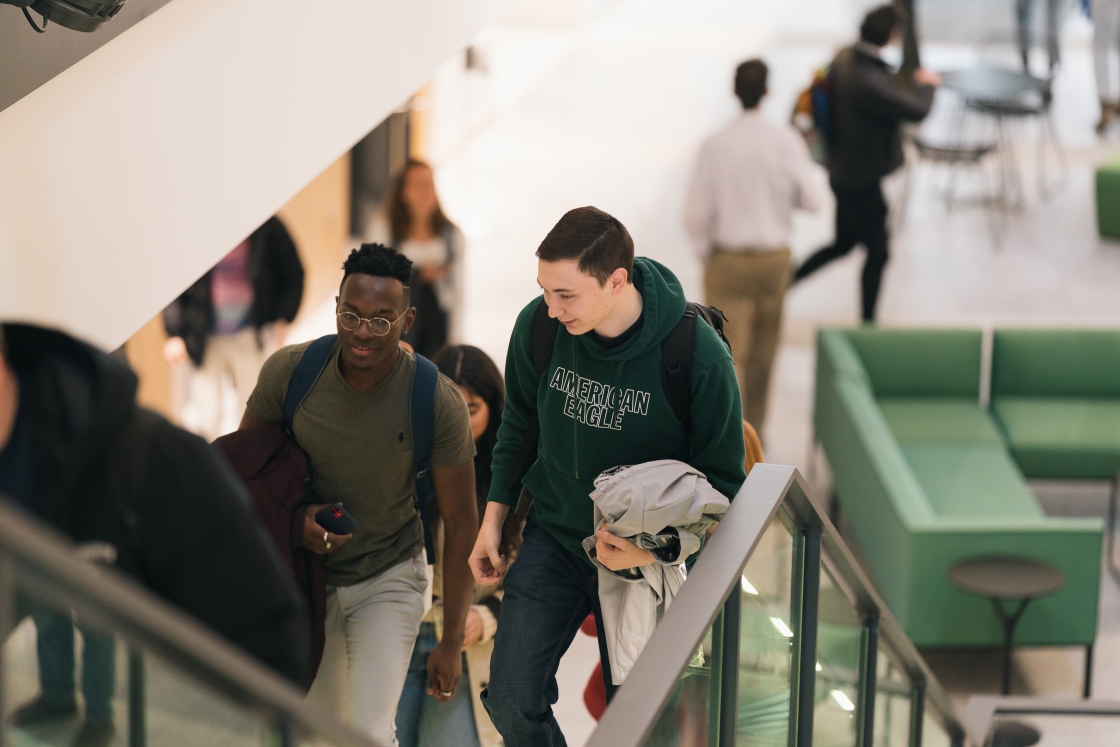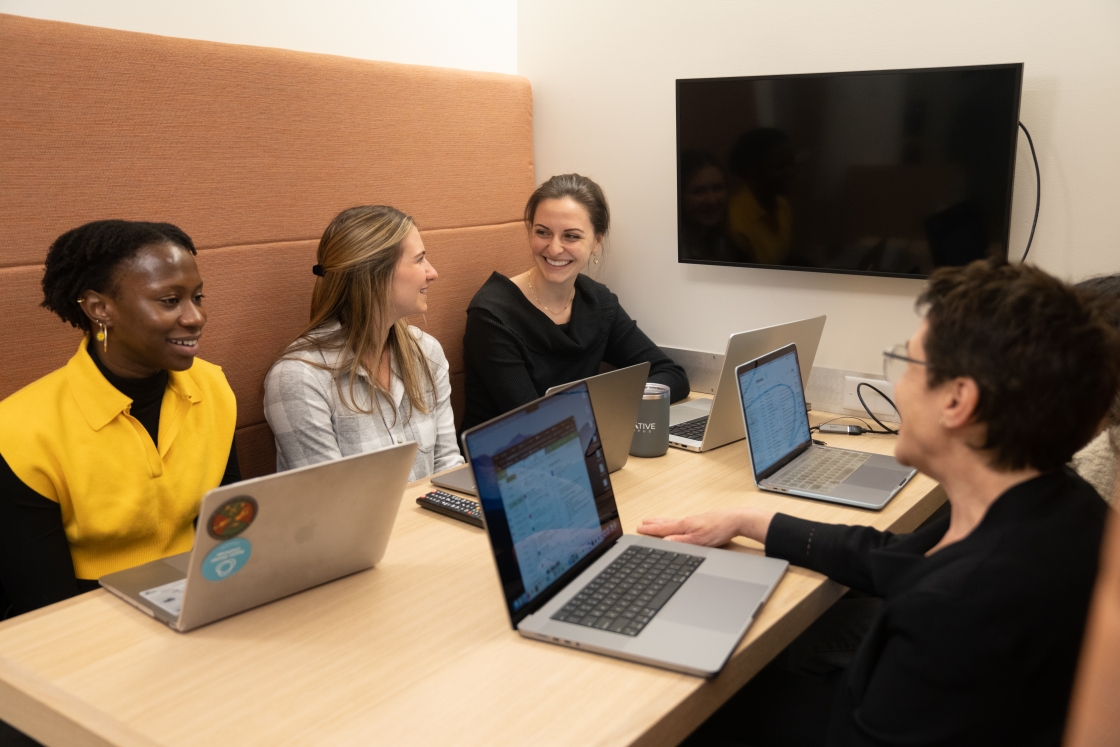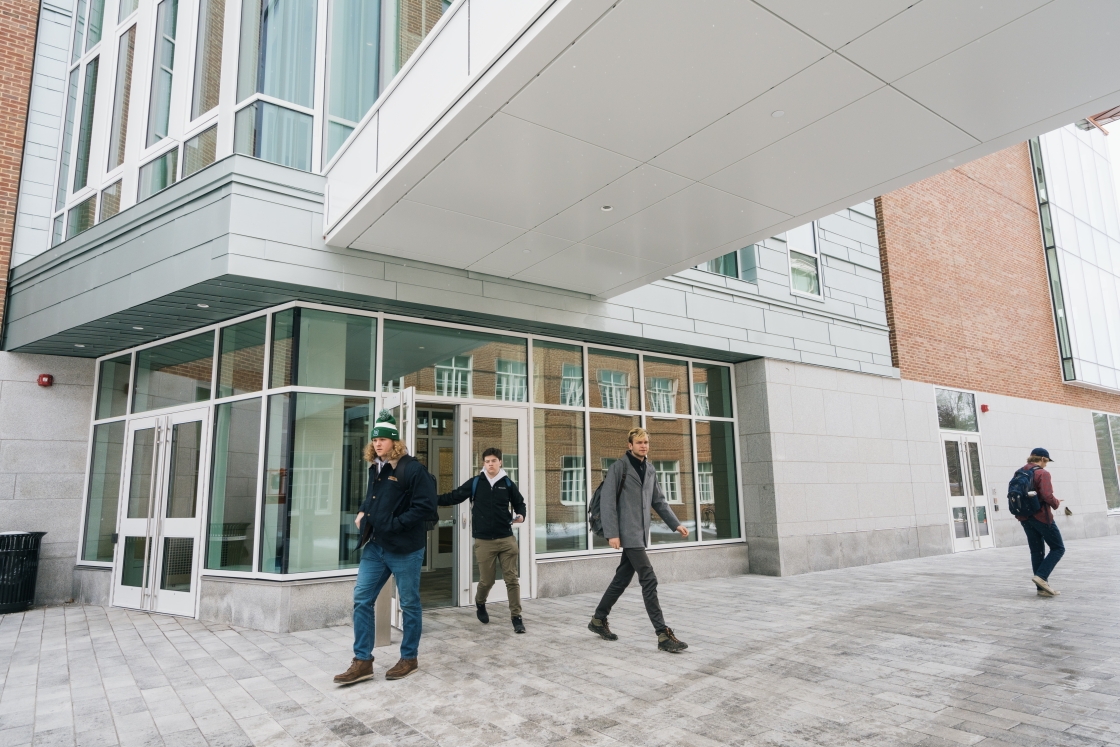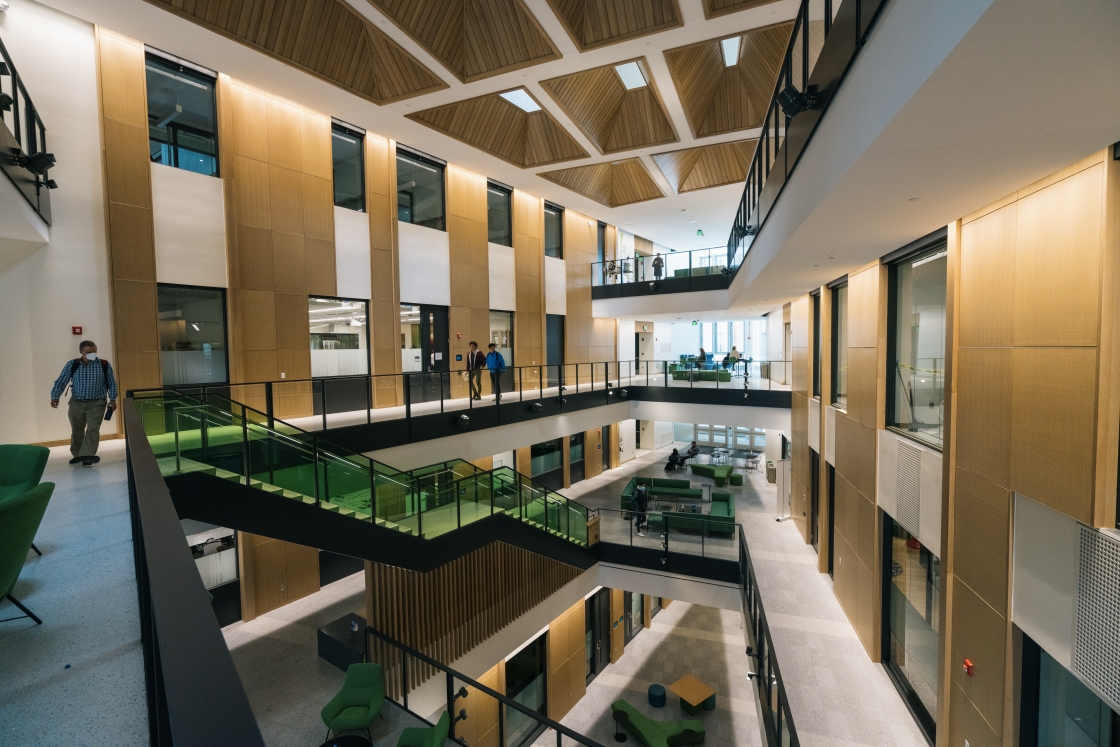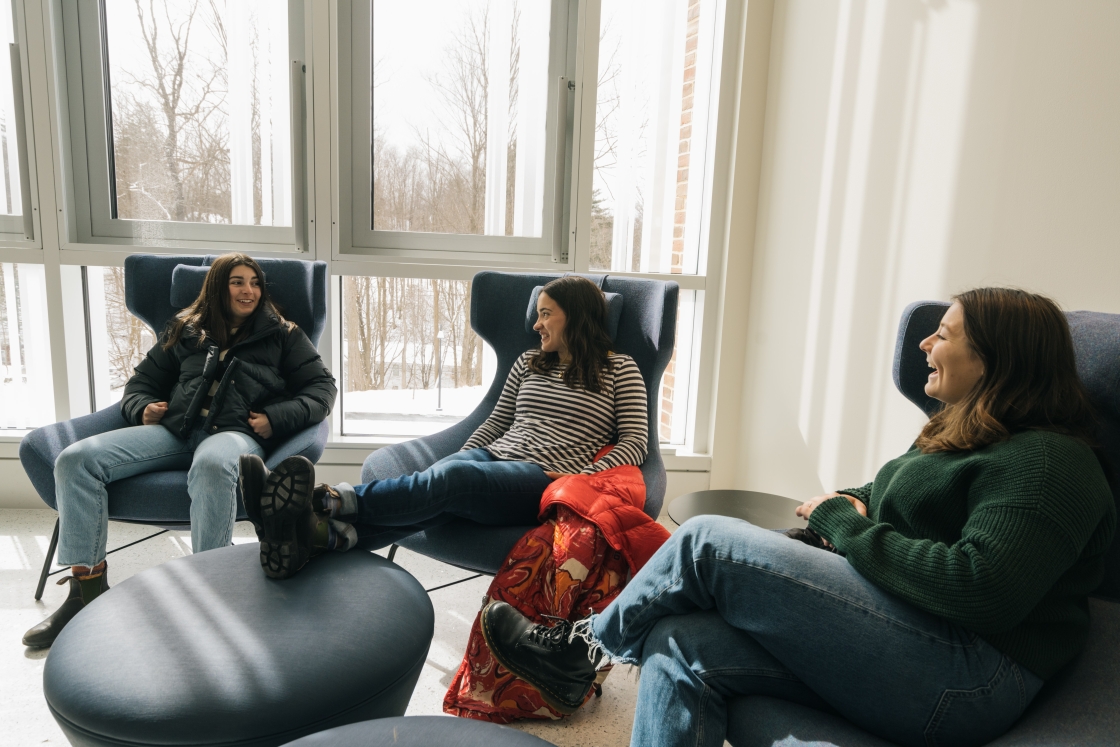On the first day of spring term in the brand-new Engineering and Computer Science Center, Vanessa Haggans ’23 and Sarah Lou ’23 were chatting on a wide stairway Monday morning as students filled the expansive atrium during the transition between classes.
“I think this new building is so beautiful and open,” said Haggans, an economics and biology major who doesn’t actually have any classes in the building but plans to spend more time in the West End of campus now that the ECSC and the Arthur L. Irving Institute for Energy and Society have opened at the end of Tuck Drive. “There are so many different spaces and cool cubbies with wonderful natural light.”
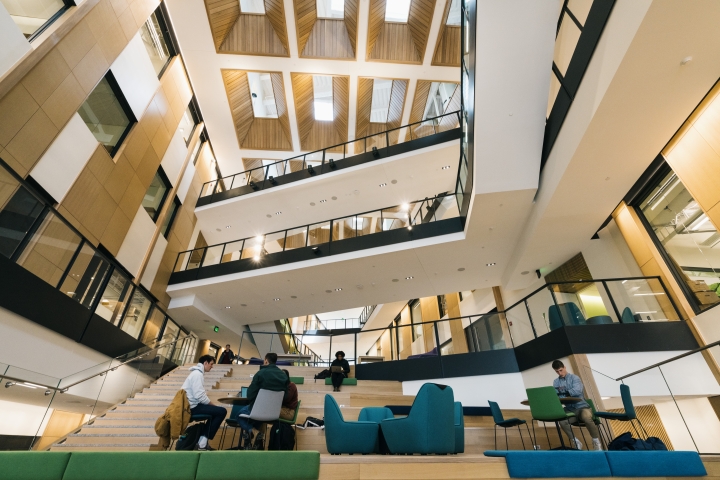
Development on the West End has been years in the making. The ECSC, where construction began in December 2018, integrates innovation and experiential learning in engineering, computer science, and entrepreneurship. It is shared by Thayer School of Engineering, the Department of Computer Science, and the Magnuson Center for Entrepreneurship, and at 160,000-square-feet is the second-largest academic building on campus.
The Irving Institute, Dartmouth’s most energy-efficient building, includes faculty and research offices, teaching spaces and more. Four classes are being held there this spring. Construction began on the building in October 2019.
Lou, an engineering major, had just finished her first class—fluid dynamics—in the ECSC and was talking with Haggans before stepping into Professor of Engineering Vicki May’s structural analysis class.
“The new classrooms are beautiful, so nice. I really like the whiteboard walls. It’s a good space,” Lou said.
May greeted her students, who were seated in groups of five and six at tables that are each equipped with a small screen. At one end of the class there is a huge monitor that can be used for instruction or to project the view from ceiling cameras that can give provide a clear view of the entire classroom.
“We have this cool room. What do you think of this room? Pretty awesome,” said May. “ I do like to do a lot of group work, so I’m excited to be in this space.”
On the top floor, Joseph DiPalma, Guarini ’24, and Kate Salesin, Guarini ’23, had set up their computer workspaces on different sides of a large common room with half a dozen clustered work areas that will be home to the computer science graduate students from Assistant Professor Bo Zhu’s machine learning lab; Associate Professor Wojciech Jarosz’s computer graphics lab; and Associate Professor Saeed Hassanpour’s biomedical data science lab.
The open space, which also includes a semicircular couch, video screen, and common areas, will give computer science students a chance to exchange ideas and socialize with people who are working on a wide range of work, said Salesin, who studies graphical images to understand how they might be used as tools of measurement of the physical and biological world.
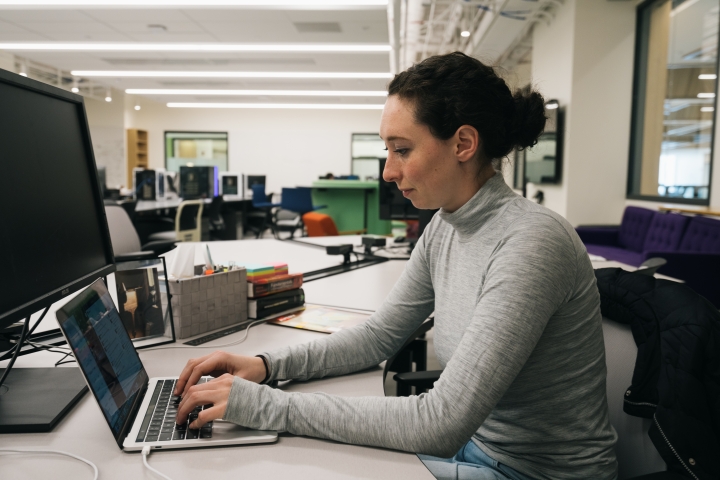
“Just being able to talk to students who you are directly working with, in contrast to meeting on Zoom and trying to discuss the work, is super helpful,” Salesin said.
On the ground floor, Jamie Coughlin, director of the Magnuson Center, was showing off the center’s new home and the DALI Lab when Lee Schuette, operations manager for the machine shop and a technical instructor at Thayer School of Engineering, stopped by to say hello.
“I want to know all about the Magnuson Center and the DALI Lab. We’re neighbors now, and what we want to do is foster collaboration. One of the best ways to do that is to bump into people and talk. That’s why I’m here,” Schuette said.
Now that the DALI Lab is based in the Magnuson Center, Coughlin said, his team is looking for ways to connect with other maker spaces such as the machine shop, the wood shop, the ceramics studio, and Jones Media Center.
“We absolutely welcome opportunities for collaboration,” Coughlin said.
***
For more photos of the ECSC and the Irving Institute from this week, see the Views From the Green as spring term starts.
